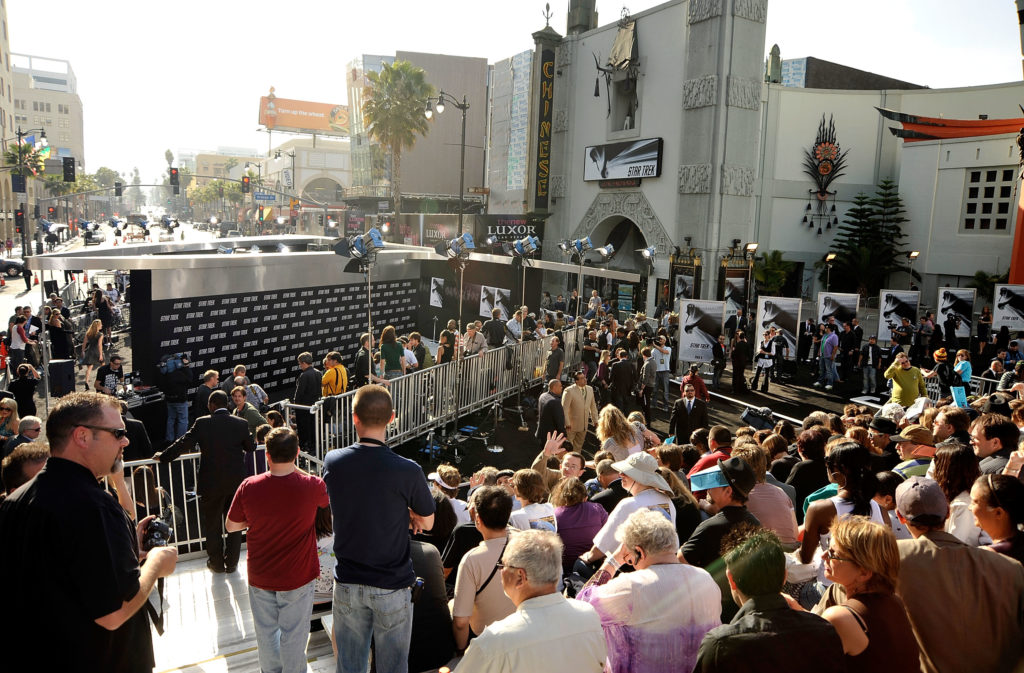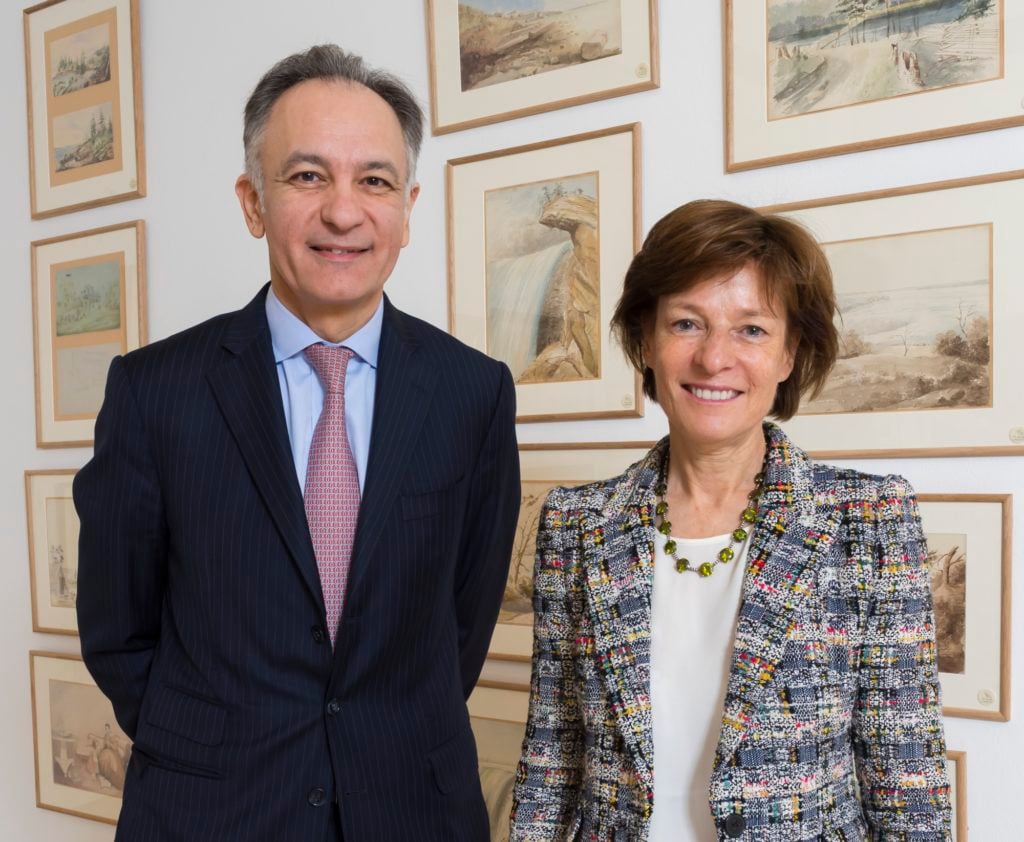Opinion
The Gray Market: What Galleries Can Learn From the Outrageous Success of Movie Reboots (and Other Insights)
Plus, our columnist examines Frieze Los Angeles's opening missteps and "animal spirits" in the art market.

Every Monday morning, artnet News brings you The Gray Market. The column decodes important stories from the previous week—and offers unparalleled insight into the inner workings of the art industry in the process.
For this edition, three stories about art-industry resurrections…
DON’T CALL IT A COMEBACK
Just over a week ago, Melanie Gerlis reported in the FT that the gallerist Almine Rech would “revisit” the landmark exhibition “A New Spirit in Painting,” curated in part by Norman Rosenthal at London’s Royal Academy in 1981. She’s even tapped Rosenthal to help her do it.
Rech will split the project into two components separated by five months and one ocean. On May 1, her New York space will open the first leg of the exhibition, centered on works from roughly the same year and set of artists as the original show. Then, during Frieze (London) week, her Mayfair space will host pieces they all made between Y2K and the present.
However, I say “roughly” the same set of artists because Rech and Rosenthal will also use this opportunity to set the historical record straight. How? By supplementing the four male painters originally highlighted in 1981 with two aesthetically simpatico women passed over at the time: Maria Lassnig and Susan Rothenberg. Call it “A New Spirit in Painting” with a new spirit of wokeness.
While I generally think that fashion is the mainstream industry most prophetic for the art world’s next destination, in this case—whether consciously or not—Rech appears to be porting over a strategy that has paid major dividends for Hollywood in the past decade-plus: the reboot.
The idea is ingenious in its simplicity. Take a property that already has what film execs would call “pre-awareness,” i.e. built-in appeal among the desired audience, and re-present it with just enough of a new spin to make people want to buy a ticket again, or for the first time (or, in a way, both).
So if you think James Bond has unwisely become the cinematic equivalent of stale teacakes, have Daniel Craig stuff Jason Bourne’s character into a tux and reboot the whole thing as Casino Royale.
And if you’re certain Star Trek could be huge if only its audience expanded beyond people who revere or resemble a crusty William Shatner, make it a brash origin story with a diverse cast of hot young actors.
Not all reboots are guaranteed hits. For every time Superman Returns to crush the box office, a Beverly Hills Cop TV series quietly gets toe-tagged.
On the whole, however, the resurrection business has been damn good. According to Box Office Mojo, six of the highest-grossing reboots between 2005 and 2012 netted a combined $1.7 billion above their production budgets worldwide.
Will it work in the art market, though? Museums have gotten in on the game in recent years, reviving and reinventing legendary shows such as “Primary Structures” and “When Attitudes Become Form.” And from a commercial standpoint, I think the reboot is a brilliant strategy. None of the artists even have to make new pieces. Instead, the curators just need to source enough surviving material to mount the exhibition, convince a few current owners to part with their works for the right price, and then focus their efforts on re-marketing something already regarded as hugely important in the industry’s mythology.
That’s not easy per se. But it’s easier to ride a pre-existing wave than to generate a new one from the ocean floor. Especially if buyers can see that they now have an opportunity to catch up to something the gatekeepers have already canonized in the intervening decades.
In other words, rebooting a classic exhibition is the next logical step for gallerists to take beyond reviving the careers of overlooked artists. True, the former may yield a shorter-term benefit than the latter. But as Hollywood has shown, that benefit can still be lucrative. So expect “A New Spirit in Painting” to become a new model in exhibiting fairly quickly.

VIP and press day at Frieze. Photo: Carl Court/Getty Images.
FRIEZE GOES HOLLYWOOD
On Thursday, Carolina Miranda of the Los Angeles Times officially broke the news that Frieze will, indeed, launch a fair in LA early next year. A collection of 60 galleries from around the world will exhibit at Paramount Studios from February 14–17, 2019 inside a “temporary structure” designed by Kulapat Yantrasast of local outfit wHY Architecture.
Bettina Korek, the LA art-world mover and shaker hired as the fair’s executive director, also hinted at something even larger, telling Miranda, “As in New York and London, we want to create a week for artists, collectors, curators, and galleries from around the world to… engage with the art scene across the city.”
Now, I wrote a grim diagnosis for Frieze Los Angeles a few weeks ago, when the event was still only a rumor in the streets and a plan behind the scenes. I think Korek and Ali Subotnick, who will oversee the fair’s artist projects and film program, are both smart hires plugged into the Angeleno scene.
But they don’t change my fundamental misgivings about the event. In fact, other details that emerged this week only make me queasier than before.
As my colleague Julia Halperin pointed out, Paramount is the same venue once occupied by the ill-fated Paris Photo LA, which belly-flopped into the afterlife before it could hold its fourth edition. It’s not entirely fair, but I can’t shake the feeling that by choosing to set up shop on the same site just three years later, Frieze Los Angeles is basically building itself on top of a cemetery like the housing allotment in Poltergeist. Spoiler alert: If all you do is move the headstones, coffins start rocketing up from the deep while the TV eats children.
More troubling to me is the schedule. FIAC Los Angeles, the major fair that never was, apparently planned to open at the beginning of the year, too—roughly the same window of time as Frieze LA. Instead, its organizer, Reed Exhibitions, dropped an anvil on the event like a cartoon cat lured to a fateful spot by a sizzling ham.
Sure, on paper, a trip to LA in February sounds like a great idea. But I’m skeptical the industry can handle another major fair at ANY point, now that the global art-fair calendar looks as bloated as one of those boa constrictors that just swallowed an entire water buffalo.
Aside from my personal experience that Valentine’s Day can be one of the worst traffic nights of the year in Los Angeles—I’m reminded of the time it took me 90 minutes to travel three miles home on surface streets—debuting at that time also means Frieze Los Angeles will be parachuting into a battlefield with other capable warriors already dug into their positions on both sides. A mid-February debut will sandwich the fair right between ZONAMACO (currently slated for February 6–10, 2019) and ARCOmadrid (usually held the third week of February).
I’d guess the thinking is that it will be easy (or at least, easier) to convince many buyers and sellers who were just in Mexico to fly north a few days later to LA. But will it actually be easy, especially when it comes to Europeans planning to hit ARCO a few days later? At a certain point, most people just want to go home.
All told, then, Frieze Los Angeles will get awfully close to putting the scientific method in action: the same venue as Paris Photo LA, similar scheduling to FIAC LA, in a city still as geographically defiant of art fairs as ever. If Frieze succeeds, then there’s a strong argument that it truly will have been because of the brand and the people more than any external factor. Either way, get your popcorn ready for whatever happens next.

Christie’s CEO Guillaume Cerutti and his predecessor, Patricia Barbizet. Courtesy Christie’s.
SPIRIT GUIDE
Finally this week, let’s dip into the auctions sector en route to a wider view of the industry. On Monday, Kelly Crow interviewed Christie’s CEO Guillaume Cerutti, with the headline teasing “What’s Behind the Art Market’s Turnaround.” Before pivoting into talking up Christie’s so fast that he may have pulled a muscle, Cerutti gave this explanation for the auction sector’s 25% increase in global sales last year:
“I think there is more confidence in the art market. People were cautious two years ago, but last year they saw that things were still selling well, and they felt better. Everyone feels reassured by how global the market has become.”
Now, I think Cerutti is a smart dude, and that’s a big question to answer succinctly. But this response is either circular logic at its finest, or a savvy insight that should sober up everyone in the business faster than a SWAT team barging into your New Year’s Eve party.
If you re-read Cerutti’s three sentences above, they basically translate to this: “People were buying because they saw that other people kept buying.”
To which you might reply: That’s it? That’s why the auction market recovered?
It’s a completely unsatisfying answer. But you know what? I think it’s largely right.
Cerutti’s thoughts reminded me of an early December 2016 post by my favorite finance writer, Josh Brown (AKA The Reformed Broker). In it, he addressed why many, if not most, Wall Street analysts were turning themselves inside out to argue that Donald Trump’s election—an event they’d been flogging for weeks beforehand as the reason the financial markets would crash or correct—was actually the reason most asset classes were still bull-charging skyward a month later.
Here’s Brown:
“The answer to this question is sentiment, which always follows price. Prices went up, so sentiment changed. What once was bearish and scary is now bullish and exciting.”
Me again: In other words, “People were buying because they saw that other people kept buying.”
Fundamentally, nothing else changed in the auction sector—at least, not so dramatically that it would account for a 25% increase in sales. Any other explanation is probably just a story we’re telling ourselves in an effort to tame the behavioral forces that investors refer to as “animal spirits.”
We can see as much in the rest of Cerutti’s answer to that opening question. He cited two examples to explain Christie’s own recovery in 2017: selling “a major Chinese art collection… in New York instead of Hong Kong” and including Salvator Mundi in a contemporary sale—a move he described as “innovative” and “extremely creative.”
No offense to Cerutti, but neither of these is exactly the discovery of fire. The latter in particular is like saying Domino’s Pizza was “innovative” and “extremely creative” when their shops also started offering up cheese-covered breadsticks with dipping sauces (i.e. a food that is perpetually one hand motion away from being… pizza).
So animal spirits are just as influential in the art market as in the financial markets—if not even more so, considering the “spooky assumption that art is worth anything.”
That means they can revive or supercharge sales at any time. But it also means that we should keep in mind the ending of Brown’s post, too:
“Animal spirits cannot be modeled… We can only accept that they are a part of the game, coming and going at uneven intervals, spreading joy and pain in their path.”
In short, if we pretend that there’s always a greater, more logical explanation, we’re kidding ourselves. Sometimes we really do just get rowdy enough to raise the dead.
That’s all for this week. ‘Til next time: If you think we never get a second chance to make a first impression, you’re probably overestimating how little attention most people pay to anyone but themselves.
Follow artnet News on Facebook:
Want to stay ahead of the art world? Subscribe to our newsletter to get the breaking news, eye-opening interviews, and incisive critical takes that drive the conversation forward.
SHARE


No comments:
Post a Comment